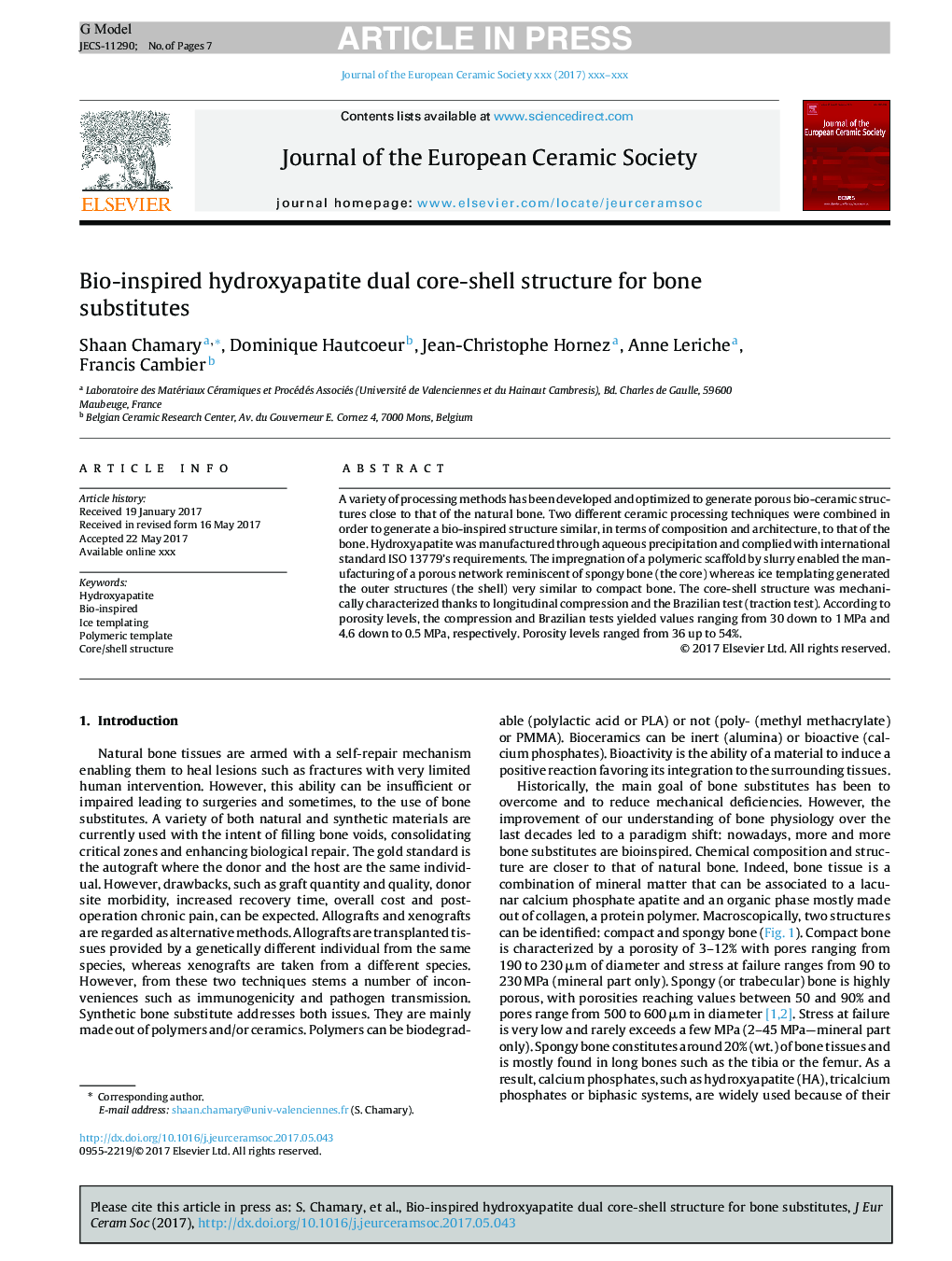| Article ID | Journal | Published Year | Pages | File Type |
|---|---|---|---|---|
| 7898954 | Journal of the European Ceramic Society | 2017 | 7 Pages |
Abstract
A variety of processing methods has been developed and optimized to generate porous bio-ceramic structures close to that of the natural bone. Two different ceramic processing techniques were combined in order to generate a bio-inspired structure similar, in terms of composition and architecture, to that of the bone. Hydroxyapatite was manufactured through aqueous precipitation and complied with international standard ISO 13779's requirements. The impregnation of a polymeric scaffold by slurry enabled the manufacturing of a porous network reminiscent of spongy bone (the core) whereas ice templating generated the outer structures (the shell) very similar to compact bone. The core-shell structure was mechanically characterized thanks to longitudinal compression and the Brazilian test (traction test). According to porosity levels, the compression and Brazilian tests yielded values ranging from 30 down to 1Â MPa and 4.6 down to 0.5Â MPa, respectively. Porosity levels ranged from 36 up to 54%.
Related Topics
Physical Sciences and Engineering
Materials Science
Ceramics and Composites
Authors
Shaan Chamary, Dominique Hautcoeur, Jean-Christophe Hornez, Anne Leriche, Francis Cambier,
